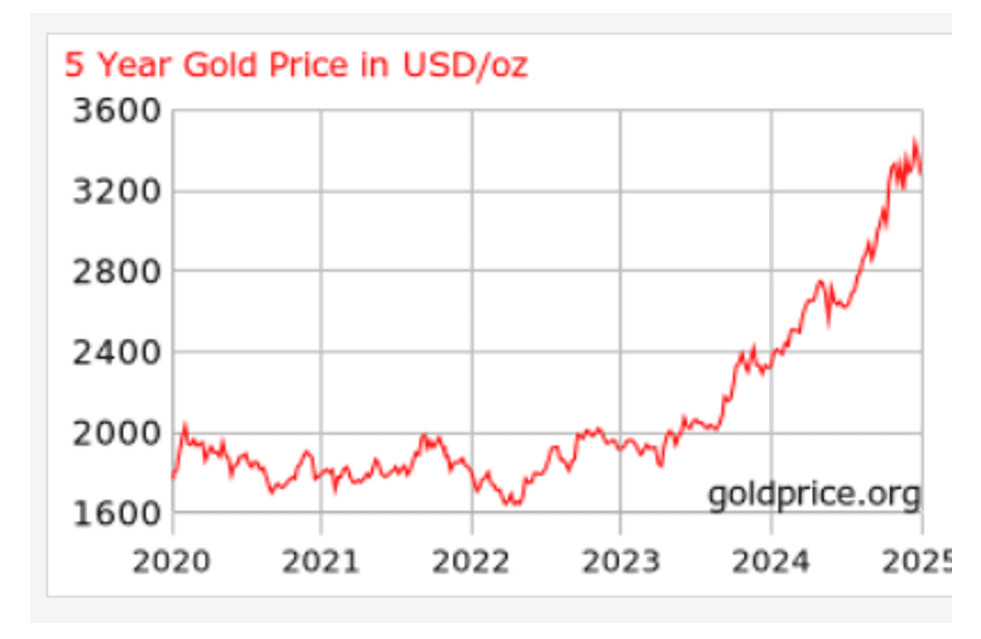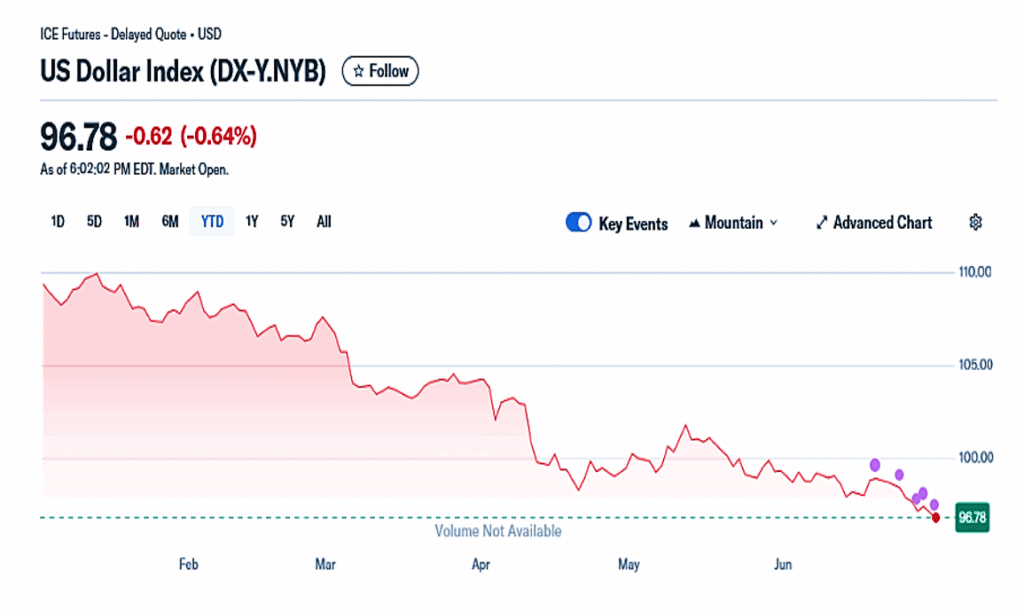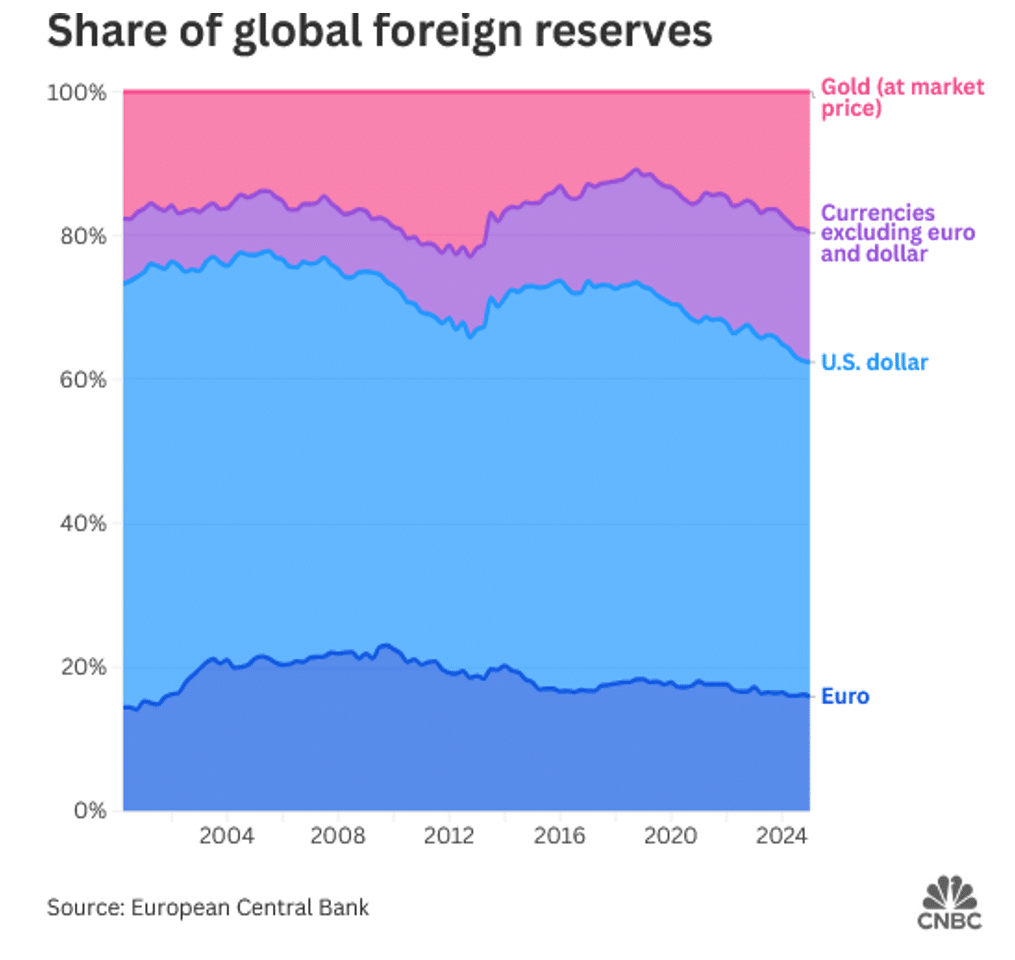The world is currently mired in record-setting debt. Last year, the combined borrowing of households, businesses and governments across the globe eclipsed $315 trillion. And in the first quarter of this year, global debt surged by another $7.5 trillion, reaching a new high of $324 trillion.
Heavy global debt loads can lead to widespread economic instability, currency devaluation, reduced private and public investment and an increased risk of a global fiscal crisis.
And one of the consequences of mounting debt levels in today’s environment are the skyrocketing debt servicing costs—or the amount of money required to not only repay borrowed loans but also the interest that has accrued on those loans.
The impact on business is particularly pronounced as rising global debt can undermine consumer spending, trigger higher borrowing fees, suppress available capital and result in corporate bankruptcies and/or insolvencies.
Global Debt-To-GDP Ratio
Nearly every country in the world holds debt, but some nations are more vulnerable than others in what is now considered to be a “High-Debt, Slow-Growth World.”
At over $36 trillion, the United States owes more money than any other country in the world, and America’s debt burden is increasing on average by about $1 trillion every three months. The U.S. is followed by China, with a national debt of around $18 trillion, and Japan, with around $9 trillion of sovereign debt.
While high debt figures are worrisome for any economy, a nation’s debt-to-GDP ratio is a more critical measure of financial health since it indicates a country’s ability to repay its liabilities relative to the size of its economy. The higher the ratio, the less likely it is that a country possesses the economic output to pay back its loans.
Based on data from the IMF World Economic Outlook, here are the countries with the highest debt-to-GDP correlation:
• Sudan: 252% of GDP
• Japan: 235% of GDP
• Singapore: 175% of GDP
• Greece: 142% of GDP
• Bahrain: 141% of GDP
• Maldives: 141% of GDP
• Italy: 137% of GDP.
• United States: 123% of GDP
• France: 116% of GDP
• Canada: 113% of GDP
Each of these nations has a debt tally that exceeds their total economic output or the overall value of all of the goods and services produced within their respective borders. At almost 123% of GDP, America’s debt liability not only threatens the solvency of essential programs like Social Security, Medicaid and Veteran’s benefits—it also elevates the risk of a financial crisis.
The Precarious Value Of Money
Global debt has been rising for well over a decade, but Covid-19 and the resulting lockdowns, business closures, government assistance and relief programs impacted global debt accrual. The fallout of black swan events like wars and pandemics can trigger higher interest rates, increase inflationary pressures, depress economic growth, erode investor confidence and depreciate the value of money.
History provides an infamous example of debt-driven currency devaluation in the case of the German Papiermark. In the 1920s, money was printed to pay off war debt and fund reparations, which led to crippling hyperinflation. The “mark” became so worthless that iconic photos of German citizens using banknotes as wallpaper serve as a sobering reminder of how quickly and completely debt can destroy the value of legal tender.
The Global Safety Net
Investment advisors, wealth managers and portfolio planners who position gold as an essential asset class could help their clients tap into its benefits as a strong diversifier, a stable long-term investment and a commodity with the potential for significant capital appreciation.
As with any investment, though, it’s important to note that acquiring gold does carry some downside. First, it is considered a non-yielding asset, meaning it doesn’t pay interest or dividends like CDs, bonds, stocks or Treasurys. Secondly, storing pure gold coins or bars is an added consideration and possibly an added expense. Gold needs to be kept in a secure environment safe from theft, corrosives, moisture and possible natural disasters, etc.
In addition, the price of gold can be volatile. It is heavily influenced by ever-changing demand triggers. For instance, gold has traditionally had an inverse relationship with Wall Street and the dollar. So, when the markets are high and the dollar is strong, gold prices tend to slump—and vice versa. Additionally, sometimes gold is negatively correlated to interest rates.
But in 2025, gold has defied many longstanding historical norms and traditional benchmarks. Record-setting world debt and steady and consistent central bank demand have made it one of the best-performing assets of the year, exceeding projections and surpassing price targets.
So, it’s important to think carefully about gold beyond short-term market fluctuations, interest rate chatter and even potential tariffs because long term, it could become a go-to asset.
The information provided here is not investment, tax, or financial advice. You should consult with a licensed professional for advice concerning your specific situation.
It was 1912 — and a tumultuous time in world history. It was the year the Titanic sank, the last Emperor of China abdicated, Serbia and Greece declared War on the Ottoman Empire, and Woodrow Wilson was elected U.S. President in a landslide.
It was also a time when many began to question the concentration of money and power among the privileged few, particularly in the U.S. financial system which was run by a coterie of wealthy bankers, traders and power brokers who had free reign over the ‘money trust’ and all forms of credit.
“Money is gold, and nothing else”
In May of 1912, a U.S. Congressional Sub-Committee (the Pujo Committee) was assembled to investigate influence peddling, conflicts of interest, price manipulation, and lack of oversight within the banking sector. The head of major banks and financial institutions were called to testify including representatives from National City Bank of New York, Lee, Higginson & Co., Kidder, Peabody & Co., Kuhn, Loeb & Co. as well as the Chairman of the First National Bank of New York, George F. Baker and the head of J.P. Morgan & Company, John Pierpont Morgan.
SUBCOMITTEE OF THE COMMITTEE ON BANKING AND CURRENCY, HOUSE OF REPRESENTATIVES, WASHINGTON, D.C., THURSDAY, DECEMBER 19, 1912, 10:30am Mr. Morgan: What I call money is the basis of banking. Mr. Untermyer: But the basis of banking is credit, is it not? Mr. Morgan: Not always. That is an evidence of banking, but it is not the money itself. Money is gold, and nothing else. Mr. Untermyer: Do you not know that the basis of banking all over the world is credit rather than gold? Mr. Morgan. It is the basis of credit, but it is not the basis of money.
In a famous exchange with Samuel Untermyer, chief counsel for the government, financier J.P. Morgan makes a clear distinction between gold, a tangible asset with intrinsic value — and fiat currency, paper money, and all forms of credit.[1]
What Did Morgan Mean?

J.P. Morgan was among the most powerful and prominent figures of his day. The Library of Congress described him as a titan of American business whose position and connections put him squarely in the middle of the development of American industry.[2]
Morgan actually used his wealth and influence to save the U.S. from several financial disasters:
“The commonly known story of the Panic of 1907 is that in October of 1907 an attempt by F. Augustus Heinze, an overzealous Wall Street banker, to corner the copper market led to a run on many major banks. The effects of the run caused a panic that reverberated throughout Wall Street, New York City banks and ultimately, many of the U.S. banking and manufacturing industries. At the height of the Panic, J.P. Morgan stepped in to aid the banking community and quell the massive drop in bank reserves and market collapse.”[3]
Morgan’s position on gold was quite clear. He believed it was the only form of real money — a physical asset with intrinsic value that was not government-issued, credit-based, subject to mismanagement, or devaluation. Some, 110 years later the JP Morgan Private Bank concurs with its namesake about the historical importance of gold and its contemporary benefits.
“Gold has been a sought-after commodity for centuries, and a popular component in investment portfolios in modern times. The metal has historically delivered attractive long-term returns … gold has exhibited a low, or sometimes negative correlation to traditional asset classes, such as equities and bonds. In our view, having gold as a part of your asset allocation makes sense as a portfolio ballast that helps to enhance the risk-return profile.”[4]
Why Gold is More Relevant than Ever

Today, there are many different ways to pay for things: credit cards, debit cards, bank transfers, mobile payments, digital wallets, bitcoin, checks and of course cash. But J.P. Morgan would argue that none of them are real money precisely because they’re either a representation of money, an electronic transfer of credit, a digital ledger balance, or a promise to pay at a later date.
And all of them lack intrinsic value or inherent and objective worth that is not imparted by any country, financial institution, technology network, banking entity, or outside entity.
According to Investopedia, gold’s enduring strength and relevance come from its rich history:
“Like no other commodity, gold has held the fascination of human societies since the beginning of recorded time. Empires and kingdoms were built and destroyed over gold and mercantilism. As societies developed, gold was universally accepted as a satisfactory form of payment. In short, history has given gold a power surpassing that of any other commodity on the planet, and that power has never really disappeared.”[5]

For J.P. Morgan, holding gold instilled power, stability, predictability, and protection from financial crisis. Amid the Panic of 1893, as unemployment soared, businesses closed, banks failed, and as U.S. gold reserves became dangerously depleted — it was J.P. Morgan who stepped in to help the federal government replenish its gold supply to help stabilize the economy.
According to investment research firm ByteTree, gold remains more important than ever and the evidence of an “undeclared gold standard” is now mounting.
“The remarkable thing is that the gold standard withered in the 1970s, and other than the recent rumors surrounding a gold-backed BRICS currency, there has been no official need for central banks to own gold. They do so out of choice. It is remarkable how an informal gold standard of sorts is returning despite it being formally vanquished half a century ago. It means that gold is once again relevant despite that not being written down in the statute books.”[6]
The Apple Did Not Fall Far …
It’s interesting how much the world of finance has changed and yet the importance of gold has not. J.P. Morgan would likely be quite pleased by the “Key Takeaways” of the 2025 Global Research Commodities Report of JP Morgan Chase & Co, now one of the oldest and largest global financial services firm in the world:
“Given gold’s diverse and fluid drivers of demand at the moment, the metal has recently served both as a debasement hedge — or a form of protection against the loss of a currency’s purchasing power due to inflation or currency debasement — and in its more traditional role as a non-yielding competitor to U.S. Treasuries and money market funds.
- Gold prices have surged in 2025, with President Trump’s focus on tariffs pushing the metal to fresh highs.
- Longer term, the 2025 and 2026 outlook for the metal remains bullish. Prices are expected to average $3,675/oz by the fourth quarter of 2025 and climb toward $4,000 by mid-2026.
- Central bank and investor demand for gold is set to remain strong, averaging around 710 tonnes a quarter this year.”[7]
[1] https://www.sechistorical.org/collection/papers/1910/1912_12_19_Morgan_at_Pujo_C_t.pdf
[2] https://guides.loc.gov/this-month-in-business-history/april/jp-morgan-born
[3] https://www.gothamcenter.org/blog/the-panic-of-1907-how-jp-morgan-took-over-wall-street
[4] https://privatebank.jpmorgan.com/nam/en/insights/markets-and-investing/is-it-a-golden-era-for-gold
[5] https://www.investopedia.com/articles/economics/09/why-gold-matters.asp
[6] https://www.bytetree.com/research/2023/07/understanding-golds-intrinsic-value/
[7] https://www.jpmorgan.com/insights/global-research/commodities/gold-prices
The World Debt Crisis Deepens
The world is currently mired in record-setting debt. Last year the combined borrowing of households, businesses, and governments across the globe eclipsed $315 trillion. And in Q1 of this year, global debt surged by another $7.5 trillion, reaching a new high of $324 trillion.
Heavy global debt loads lead to widespread economic instability, currency devaluation, reduced private and public investment, and an increased risk of a global fiscal crisis.
And one of the more dire consequences of mounting debt levels in today’s elevated rate environment, are the skyrocketing debt servicing costs — or the amount of money required to not only repay borrowed loans but also the interest that has accrued on those loans.
The impact on business is particularly pronounced as rising global debt can undermine consumer spending, trigger higher borrowing fees, suppress available capital, and result in corporate bankruptcies and/or insolvencies.
Global Debt-to-GDP Ratio
Every country in the world holds debt but some nations are more vulnerable than others in what is now considered to be a ‘High-Debt,’ Slow Growth’ era.
At over $36 trillion, the United States owes more money than any other country in the world and America’s debt burden is increasing on average by about $1 trillion dollars every three months. The U.S. is followed by China with a national debt of around $17 trillion and Japan with some $10 trillion of sovereign debt.
While high debt figures are worrisome for any economy, a nation’s debt-to-GDP ratio is a more critical measure of financial health since it indicates a country’s ability to repay its liabilities relative to the size of its economy. The higher the ratio, the less likely it is that a country possesses the economic output to pay back its loans.
Here are the countries with the highest Debt-to-GDP correlation:
- Sudan: 252% of GDP
- Japan: 234.9% of GDP
- Singapore: 174.9% of GDP
- Greece: 142.2% of GDP
- Bahrain: 141.4% of GDP
- Maldives: 140.8% of GDP
- Italy: 137.3% of GDP.
- United States: 122.5% of GDP
- France: 116.3% of GDP
- Canada: 112.5% of GDP
Each of these nations has a debt tally that exceeds their total economic output or the overall value of all of the goods and services produced within their respective borders. At almost 123% of GDP, America’s debt liability not only threatens the solvency of essential programs like Social Security, Medicaid, and Veteran’s Benefits — it also dramatically elevates the risk of a full-blown financial crisis.
The Precarious Value of Money

Global debt has been rising for well over a decade but Covid-19 and the resulting lockdowns, business closures, government assistance and relief programs — dramatically accelerated global debt accrual.The fallout of black swan events like wars and pandemicscantrigger higher interest rates, increase inflationary pressures, depress economic growth, erode investor confidence, and dramatically depreciate the value of money.
History provides an infamous example of debt-driven currency devaluation in the case of the German Papiermark, the official money of Germany between 1914 and 1923. Before the start of World War I, the German ‘mark’ went off the gold standard and voracious money printing ensued. Money was printed to pay off war debt, fund reparations, pay government workers, and finance massive deficits which led to crippling hyperinflation. The ‘mark’ became so worthless, that iconic photos of German citizens using banknotes as wall paper serve as a sobering reminder of how quickly and completely debt can destroy the value of ‘legal tender.’
The Global Safety Net
It is the instability of paper money that has driven central banks to acquire gold at record levels. Gold has long been recognized as a time-tested store of value — and the world’s banks are on a three-year buying spree in an effort to prop up their currencies, diversify their reserves, and protect their economies.
Gold is an inflation hedge and widely regarded as crisis insurance. It is highly liquid and globally accepted, but most of all, it is a safety net and a life line to governments plagued by the highest debt levels in history. Indeed, gold is now the world’s second largest reserve asset.

For business leaders, record-setting global debt presents a challenging economic climate. It reduces investment, increases uncertainty, undermines initiative and makes it difficult to plan, operate, and grow a business
At Thor Metals Group, we have been sounding the alarm on soaring world debt for years, addressing the growing risks to consumers, corporations, and the economy — from market instability and slower growth — to higher borrowing costs and a full-blown global recession.
Our industry leading gold reports, blogs, and precious metals experts can provide further insights into the advantages of acquiring and holding what is arguably the world’s most important physical asset, amid one of the most challenging economic periods in history.
Gold’s performance in 2025 has been staggering, and there’s no shortage of opinions about the strength and depth of its ongoing bull run. Prices of the yellow metal are up over 25% year-to-date and more than 86% over the past five years. Major investment banks and financial services firms like Goldman Sachs, JP Morgan, Bank of America, and UBS have been seemingly caught off guard by gold’s unrelenting rise, triggering repeated adjustments to their official price forecasts:

In May, analysts at Goldman Sachs concluded that gold is poised to break even more records:
“Gold is increasingly in focus among traders, investors — and central banks.
The precious metal, which has been used as a financial asset for millennia, is prone to dizzying rallies and deep slumps. But despite the commodity’s volatility, gold has repeatedly set records in recent years. Since March, investors have been increasing their holdings of gold, driven by concerns about the health of the economy and market volatility. Longer term, Goldman Sachs Research expects prices to be propelled by multi-year demand from central banks. Our analysts’ gold price prediction is for these two factors to push the metal to new record highs.”[1]
Similarly, JP Morgan cites geopolitical risks, policy uncertainty and financial volatility as propelling gold to as high as $4000/oz according to their head of Global Commodities Strategy.
“Earlier this year, we examined the structural shift in gold’s demand and geopolitically influenced pricing drivers fueling its rebasing higher, ultimately posing the question if $4,000/oz is in the cards — yes, we think it is, particularly now with recession probabilities and ongoing trade and tariff risks. We remain deeply convinced of a continued structural bull case for gold and raise our price targets accordingly.”[2]
The current gold run did not start this year however — with the onset of inflation, higher interest rates, and the Russia-Ukraine War — gold prices began a gradual but steady ascent in late 2022. Since that time a confluence of factors has pushed gold to more than 60 record highs over the past two years.
The U.S. Dollar’s Very Bad Year

Much has been written about the ‘era of the dollar’ coming to an end and indeed gold’s view as a safe haven stronghold can be attributed to increasing threats to the dollar’s reign as the world’s reserve currency.
Last week, the dollar’s value fell to a 3-year low. The U.S. Dollar Index, which measures the of value of the buck relative to a basket of other currencies that include the Euro, Swiss Franc, Japanese, Yen and British Pound — started the year at: $108.49. It has since fallen to $96.78, setting a multi-decade record low.[3]
“The US dollar has had its worst first half-year in more than 50 years, as the financial markets over the last six months were dominated by geopolitical crises and Donald Trump’s trade war. The dollar has fallen by more than 10% against a basket of currencies since the start of 2025. That is its worst performance over the first six months of any year since 1973, and the worst half-year since the second half of 1991.This sell-off has pulled the dollar index down to its lowest level since March 2022.”[4]
There is a strong inverse relationship between gold prices and the U.S. dollar. Since gold is priced in bucks both at home and abroad, a stronger dollar makes the precious metal more expensive in other currencies, and this can suppress demand. But a weaker dollar reduces the price of gold to foreign buyers.
And there’s something else about the dollar that weighs heavily on gold prices. Many countries are actively reducing their reliance on the greenback. Whether it’s in response to trade wars, sanctions, or America’s unsustainable debt load — de-dollarization is in full swing as key nations around the world are now actively ditching dollars.
“Like many other trading powers in history, US administrations have not been averse to using economic leverage to motivate and subjugate their allies. From promoting decolonization to rebalancing expenditures, virtually every postwar American president has imposed powerful economic sanctions, or threatened to, on adversaries and allies alike to influence strategic outcomes in the US national interest. These moves had real consequences for the development of the world economy and financial markets. Above all, they stimulated a search among asset-holding governments and firms for new safe havens.”[5]
The World Turns to Gold
At this juncture in time, there is really no going back for the U.S. dollar. America’s exorbitant privilege has allowed us to borrow at lower rates, finance our deficits, exert undue influence, and grow into the world’s foremost economic superpower. But whether we’ve abused our privilege, failed to keep our books in order, or weaponized the greenback to the point of no return — other countries are embracing a world beyond the buck.

“Banks and brokers are seeing rising demand for currency derivatives that bypass the dollar, as trade tensions add a sense of urgency to a years-long shift away from the greenback. Firms are receiving more requests for transactions including hedges that sidestep the dollar and involve currencies such as the yuan, the Hong Kong dollar, the Emirati dirham, and the euro.”[6]
And gold is nipping at the dollar’s heels in terms of the world’s foreign reserve holdings. Due to historic hoarding by central banks, it has just overtaken the euro as the world’s second largest reserve asset. Central Banks are now on track to amass another 1000 metric tons of gold this year, marking the fourth consecutive year of an unrelenting gold grab. The world’s monetary authorities hold gold to protect their currencies and increase their financial safety net — and their current stockpile is at levels not seen since the 1960s.
“Central banks amass liquid assets such as foreign currencies and gold as a hedge against inflation and to diversify their holdings. It also allows them to sell these reserves to support their own currency in times of stress. Gold is seen providing long-term value and resilience through volatility, and central banks now account for more than 20% of its global demand, up from around a tenth in the 2010s.”[7]
Monetary Regime Change
Those of us who have been monitoring the dollar, market valuations, central bank activity, geopolitics, and trade relations — have been touting gold has a reliable hedge and financial safe haven. And now it seems, the entire world agrees.
Gold has reclaimed its place at the center of global finance and during this period of monetary regime change, it will once again serve as a critical bridge from the world of bills and bank notes — to whatever form of money comes next while maintaining its critical role as a timeless and transcendent store of value.
Courtesy of Thor Metals Group. 1-844-944-THOR.
[1] https://www.goldmansachs.com/insights/articles/why-gold-prices-are-forecast-to-rise-to-new-record-highs
[2] https://www.jpmorgan.com/insights/global-research/commodities/gold-prices
[3] https://finance.yahoo.com/quote/DX-Y.NYB/
[4] https://www.theguardian.com/business/2025/jun/30/us-dollar-first-half-trump-tariffs
[5] https://www.hinrichfoundation.com/research/wp/trade-distortion-and-protectionism/the-convergence-of-political-risk-economic-coercion-and-de-dollarization/
[6] https://www.bloomberg.com/news/articles/2025-05-09/global-shift-to-bypass-the-dollar-is-gaining-momentum-in-asia
[7] https://www.cnbc.com/2025/06/11/gold-overtakes-euro-as-second-biggest-global-reserve-asset.html